Story and photos by Vince Johnson
South Australia, 10-13 April 2013. Forty-two members of the Bugatti Club Australia made their way to the Barossa Valley wine country, north-east of Adelaide, for the ‘Five Valleys Run’ in April. Understandably, wineries featured heavily in the itinerary. Interstate members from New South Wales met those who had travelled from Victoria at Stirling on Tuesday evening, not far from Piccadilly Valley in the hills above the state capital.
Wednesday’s route took in the Lobethal Valley’s public road circuit used in the 1939 Australian Grand Prix. A German-flavored barbecue welcomed the travelers on their afternoon arrival at the Tanunda Caravan & Tourist Park, home base for the five days. On Thursday morning the group headed towards Eden Valley, including a visit to Greenock’s historic aircraft museum, before driving the little-changed 6km (4.3mi) loop in the town of Nuriootpa, site of the 1950 Australian Grand Prix.
Organizers Kent Patrick (Type 37A – BC22/664) and David Inglis (Type 37 – BC97) had the cars off to the Clare Valley on Friday. Lunch was at the historic Sevenhill winery founded by two Jesuit priests in 1851, where Brother John May, the seventh winemaker in 162 years, explained the finer points of fermenting the juice of the grape. On Saturday morning the early risers made their way to the Farmers’ Market at nearby Angaston. A rendezvous was arranged with the others at the picnic grounds not far from the original Angas family home ‘Collingrove’. Following lunch at ‘The South Australian Company Store’, the next stop was Mengler’s Hill for a panoramic view across the Barossa Valley. Dinner at the Tanunda Pines Golf Club on Saturday evening was the final official part of the run, but many stayed on for more socializing on Sunday.
There’s not much luggage space in a Grand Prix car from the 1920’s but nine cars were in this body style. Antony Simpson’s Type 57C had originally been tourer-bodied before being converted by a previous owner.
The three Type 23s had a little more room, but it was the fortunate ones in the Type 44s that had the least trouble finding places to hold the cartons of winery produce collected during the day trips. Keeping the Bugattis company were two Amilcar CGSs of David Beaumont and Angus Mitchell, and Trevor Montogomery’s Alfa Romeo 6C.
Mike and Dorothy Pryce were in their immaculate Type 44, chassis 44535. It had been imported in chassis form to Australia in 1928 by Carl Junker in Melbourne, where it was fitted with its fabric-covered body by coachbuilders Martin and King.
Its three-valve, straight-eight engine of 2991cc (182 cu in) produces 80bhp @ 4000rpm. Carl competed with the car in various track and hill-climb events, winning one of them. More than twenty owners later, Melbourne Bugatti enthusiast John Porter restored the bodywork. In 1982, when he sold his collection, the Pryces drove the mechanically un-restored car 800km (500mi) gently back to Adelaide, where a long mechanical refurbishment began with old friend and man of many talents, Danny Larsen, doing the hard bits.
Thirty years earlier, the original wire wheels had been replaced with aluminum blade wheels from a Type 43. In the interests of safety the car now rides on a set of new wheels, as, after eighty years, corrosion fatigue has taken its toll. Mike and Dorothy have no qualms about taking the tourer on the open road and it has served them reliably on many Bugatti and other rallies.
In Mike’s words, “It will keep up with many more powerful cars, especially on hills, where its light weight shows to advantage. Many of the young bloods who bought GP cars are now hankering for the relative comfort of a T44 as middle age approaches!”
Driving the oldest Bugatti of the group, Michael Edwards is still chasing the early history of his Type 13. His father Ern found the car in pieces in 1960 and put it back together. The engine, gearbox and front axle were from different makes and Michael and Ern sourced original Bugatti parts from around Australia and overseas to replace them.
The radiator has been confirmed as being first fitted to chassis 1501 in 1922 and delivered to Mr. Jarrott, the Bugatti agent in London, UK. Michael is not sure if it has ever been replaced, but based on photos of the car in the 1940’s, it is possibly original.
Fitted with engine number 438 from chassis 2068, a four-valve, single overhead camshaft four-cylinder, its bore and stroke of 69mm x 100mm give it a displacement of 1496cc (91 c in). With twin plugs per cylinder and two SEV magnetos, it should be good for around 30bhp @ 4000rpm, quite sufficient ninety years ago in a car weighing not much over 600kg (1,320 lbs.)
Michael explained that in the last eight years, “I’ve gone through it from one end to the other. There will always be more work to do but that’s the fun of vintage car restoration. The car is very raw to drive, no luxuries, just lots of power and excellent handling. The most interesting aspect is the lack of brakes, which presents some tricky situations on public roads and when descending steep hills!”
It’s not difficult to see why the Bugatti Club Australia has such enthusiastic members. When it can take seven or eight separate tasks just to get your car’s engine fired up, each day is an adventure. Judging by the camaraderie and conversations at lunch, they wouldn’t have it any other way.
Bugattis on Tour
Type 13: possibly 1501
Type 23: chassis 2539; 2562; 2403
Type 35: chassis 4450
Type 35B: chassis 4884; Pur Sang
Type 37: chassis BC57; BC97
Type 37A: BC22/664; R – BC86
Type 44: chassis 44417; 44535
Type 57C: chassis 57627
With thanks to Kent Patrick, Mike Pryce and Michael Edwards

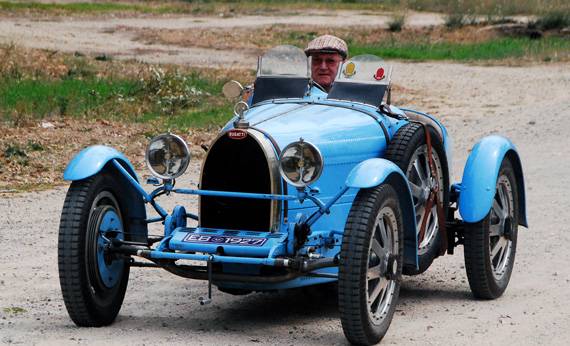


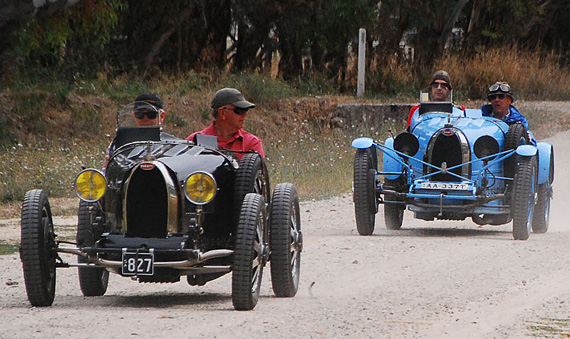
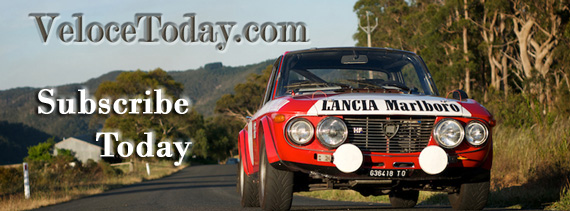





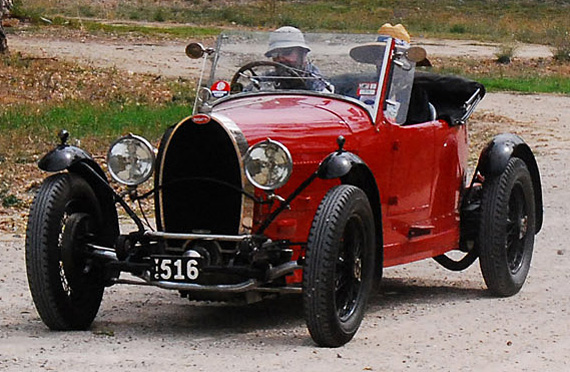
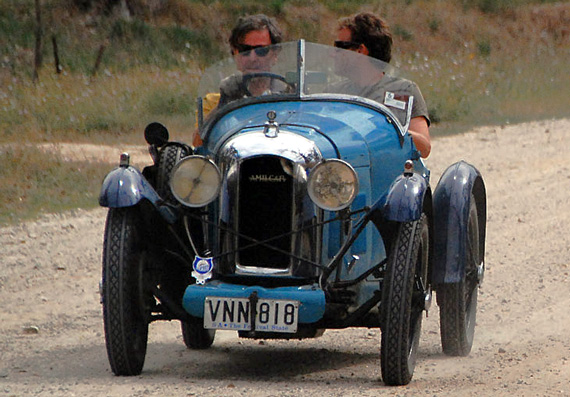
To Kent Patrick
Could you please cont me re Alan Puckett
History for the AM history of his and your rebuilding of DB S/103
Regards. Anthony de Young cobdeyoung@gmail.com